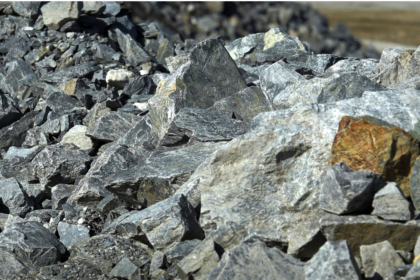James Dargie: Former Director, Joint FAO/IAEA Division of Nuclear Techniques in Food and Agriculture once said,
“The key lies in empowering the millions of smallholder producer and landless workers who form the backbone of rural economies in most developing countries to grow their incomes and improve their livelihood by raising agricultural productivity and engaging in markets”
Hi readers! Did you enjoy reading Biodiversity? Now let’s see what is on the horizon of Pakistan.
Agrobiodiversity reported from different provinces of Pakistan
Pakistan has been enormously rich in genetic diversity of cereals including rice* for which there are
1850 species of in Punjab and Sind
1749 species of Wheat and wheat relative** in Punjab & Baluchistan
622 species of Sorghum in Punjab and Sind
769 species of Millet in Punjab
969 species of Barley in Punjab
272 species of Oats in Punjab and Baluchistan
171 species of Forages in all over Pakistan
145 species of Ornamental flowers in Punjab, Northern areas, and Baluchistan
170 species of Ornamental perennials in all over Pakistan
700 species of Mixed fruits in northern areas, Punjab, Sind, and Baluchistan
100 varieties of Citrus in Punjab
60 varieties of Mangoes in Punjab and Sind
548 species of Medicinal plant both annual and perennials in all over Pakistan
148 all type Brassica in Sind and Punjab
178 species of Crucifers in Punjab and Sind
>171 types of cotton*** (herbacium and arborium)
100 types of Maize all types in Punjab and Azad Kashmir
2449 types of Pulses (chickpea, lentil, mung bean) in Punjab and Sind
Perennial:
100 types of Flowers in all over Pakistan
118 types of Trees in all over Pakistan and
>539 types of Vegetables in all over Pakistan
* Large number of accessions of cereals and legumes are available in Plant Genetic Resources Institute (PGRI) of Pakistan Agriculture Research Council (PARC), Islamabad, Pakistan
** Naked wheat was grown in Baluchistan since 6000 years BC
*** Central Cotton Research Institute (CCRI) Multan was maintaining about 1600 accessions of different cotton species. The oldest cotton yarn was unearthed in 5000 years BC from Mohenjo-Daro, Pakistan.
Current status of PGRI is that from wherever and however you try to open her website, it ends up in Nepal. If someone knows how to open PGRI website kindly let me know, I will be obliged. A July 5th, 2022, announcement from National Agriculture Genetic Resources Center (NAGRC) or “Gene-bank” (probably different from PGRI) says, “that it is currently conserving 11,051 accessions of more than 110 crops species and that’s all”.
It appeared that another national asset builds by JICA, Japan with local cooperation at the cost of 216.4 million yen and additional 1567 million Yen under “Grant Aid Project” for Establishment of Genetic Resource Preservation and Research Laboratory is no more functional because JICA’s funds are no more available (what a shame?).
Why we conceive the ideas of such projects when we lack the capacity to even understand its vitality for the nation what to talk about its sustainability? Another internationally renowned institute of prime importance has been made “white elephant” whose employs are probably getting pay from national exchequer without doing what they were supposed to do without any of their fault
Can any body educate me on this aspect please?
Where do we stand? Are we using the Nature’s gift rationally?
As mentioned above, Pakistan is blessed with a wealth of genetic diversity of wild and cultivated plants of crops, vegetables, fruits, ornamental plants, perennial trees, cereals, and medicinal plants. This diversity is the main source of providing food, feed, and fodder to millions living in the native areas. It is imperative therefore, that the diversity native to this country is evaluated and utilized in the crop improvement programme in order to strengthen the basis for sustainable agriculture production.
Nuclear Institute for Agriculture and Biology (NIAB), Faisalabad, is the only institute in the country that worked extensively on utilization of genetic resources. Of particular significance is the work on improvement of salt and drought tolerance in wheat and rice using diversity available in the wild relatives of these crops. The material has been collected from different germplasm centers of the world including some of the accessions native to Pakistan and was maintained, multiplied, evaluated for different characteristics and fingerprinted using different markers. The identified wild species generally belonging to wild progenitor (Aegilops species) of cultivated wheats (Aegilops geniculata and Ae. cylindrica) and were used to transfer gene(s) for biotic and abiotic stresses into wheat.
NIAB is the only research Institute in the world that used Ae. geniculata and Ae. cylindrica as gene source for salt tolerance. The wheat material produced in this programme has been used as germplasm at places like Bangor, UK and Zaragoza, Spain, and other saline areas of the world. It is reported to be one of the best wheat materials produced for saline areas as it is giving good agronomic yield on saline lands.
Efforts were also made to conserve agronomically important gene(s) residing in the wild species of wheat and rice into commercial cultivars in order to create agro-biodiversity for sustenance of agriculture in times to come. For example,
In Vivo conservation: conservation of specific characters in near relatives
How we did that?
- Conservation through chromosomal translocation, addition, and substitution lines, for example we crossed Aegilops variabilis: a secondary gene pool of wheat that possessed immunity for wheat disease Karnal Bunt.
Foolproof identification of hybrid was made through chromosome counting. Even the fertility of the F1 hybrid was predicted through studying chromosomes pairing at meiotic metaphase-1 (pl. see figures).


35 chromosome (left) paired beautifully and exchanged genetic material to wheat chromosomes (right).
This was the first report in the world and the practice since than is being used for wheat improvement.
- Conservation through crossing with primary gene pool, for example

We conserved Red Rice characters in Basmati rice through crossing and you can see in the pictures all sort of variability such as
Green stem and leaves and yellow panicles (top left)
Purple stem and leaves and yellowish red panicles (top right)
Purple leaves, purple and yellow stem, yellow panicles (bottom left) and
Green stem, purple leaves, green and purple-green panicle (bottom right)
- Conservation through crossing within secondary gene pole for example,
We produced “DURUGEN” a salt and drought tolerant hexaploidy wheat by crossing durum wheat with accession F of Ae. geniculata (secondary gene pool of wheat that possess salt and water deficiency tolerance) followed by selection of a fertile natural amphiploidy that was also tolerant to drought and water deficiency


(Pl.see figures). The second-generation plants when tested using 50% less irrigation water and salinity of EC 15dS m-1 indicated significantly lower reduction (10-12%) in biomass and (5-8 %) and in grain yield than that observed in check varieties (37% and 23%, respectively) grown under similar conditions. The fully fertile amphiploid has whole of Ae. geniculata genome conserved into durum wheat.


Through secondary gene pool, we also produced DTL (Drought Tolerant Line) by crossing WL-1076 (that we produced at NIAB through the use of primary gene pool) with a water deficiency tolerant accession of Aegilops geniculata and was back crossed with recurrent wheat parent and selfed 6 times before DTL was tested in the field for salt tolerance. Please see figure of a typical DTL plant growing in the field (left) with heavy wax (a marker of water deficiency tolerance) on the leaves and stems (right).
- Conservation through crossing within tertiary gene pool for example, we produced SSt (Short Stature wheat line), by crossing WL 886 (produced by transferring gene from Thinopyrum junceum (tertiary gene pool to wheat) with F1 plants of a cross between local wheat variety and WL4909 (a hybrid of 6x wheat and Thinopyrum junceum made at USDA-ARS, Logan, Utah) which possessed salt tolerance transferred from Thinopyurum jenceim. SSt is an 18 inches tall variety which can be grown on saline lands and is being used extensively as germplasm at USDA-ARS, Logan, Utah, USA.
A typical SSt plant
For transferring drought and water deficiency tolerance into Basmati rice varieties, we studied 6 upland rice progenies obtained from Cuba comprising
125 WAB56-50
132 WAB272-B-B-2-H3
141 WAB100-B-B-B-B-21-H2
150 WAB272-B-B-5-H2
165 WAB56-125
168 WAB56-104 and
177 OS-6
1-6 are interspecific derivatives of Oryza sativa x Oryza. glabrrima while
No. 7 is a known drought tolerant O. glebrrima ace. OS-6.
We evaluated the material for drought and water deficiency tolerance and observed high diffusive resistance (maximum value in OS-6) in all the lines that is an indication of low transpiration or no transpiration and stay green character: both are indicators for drought and/or water deficiency tolerance. We crossed OS-6 with Basmati and IRRI-6 varieties and selections were made (from the trial growing in 100%, 75% 50% and 25% less water than that required by Basmati varieties) for plant showing stay green character ( Pl see figures). Since first selection, this material is being growing at NIAB with 50% less water with yield higher than Basmati varieties.




A hybrid between IRRI-6 and OS-6 growing under 100%, 75%, 50% and 25% of water with no significantly reduction in yield.
In addition to this wild germplasm of cotton native to Pakistan has also been used for improvement of cotton cultivars. CCRI, has worked extensively in this direction and has so far, developed several high yielding and disease resistance (especially for cotton leaf curl virus) cotton lines. Fiber quality has also been improved in similar way. The institute is therefore, contributing extensively to enrichment of cotton germplasm: an important component of varietal production.
The uncertainties of climate change demand a complete rethink of research especially the breeding priorities. Plant breeders needs to nurture species and genetic diversity in the field. Hopefully, it will be the peasant farming system (that ties land and labour together in a distinctive way and sustains a mode of farming that not only has been able to face changing times, but which is also able to successfully adopt itself to a bewildering range of contrasting ecological and socio- economic conditions) that will use genetic diversity and help crop withstand climate change because
Green revolution plant breeders produced 8000 new crop varieties since 1970, industrial plant breeders have produced 72,500 plant varieties while peasant farmer produced 1.9 million plant varieties since 1960. They did it in the past why can’t they do it now?
What do you think dear readers?
Enjoy reading this a bit technical part at the end and I will see you next week with totally a new subject
Till then, take care,
Bye.





